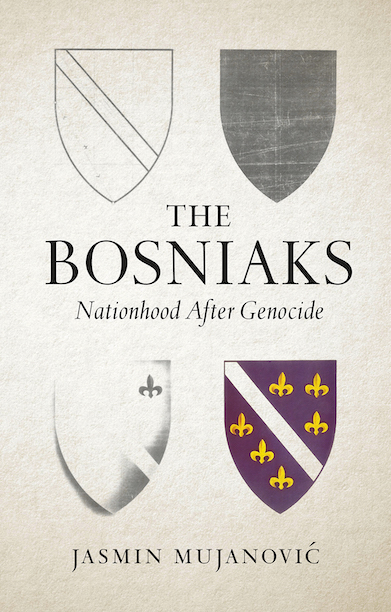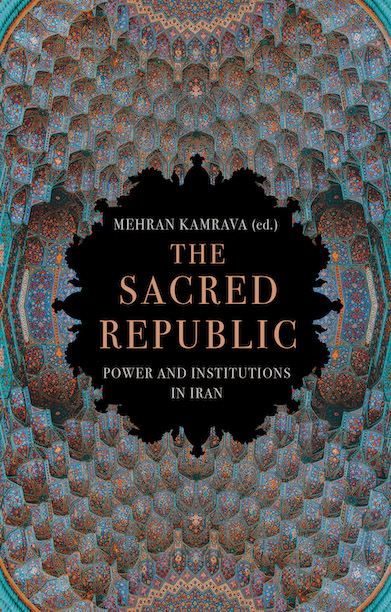Inside the Islamic Republic
Social Change in Post-Khomeini Iran
Part of the Georgetown University, Center for International and Regional Studies, School of Foreign Service in Qatar seriesGoes beyond the media stereotype of fashionable parties in North Tehran to examine the quotidian realities of how society has evolved in Iran since the 1979 revolution.
Description
The post-Khomeini era has profoundly changed the socio-political landscape of Iran. Since 1989, the internal dynamics of change in Iran, rooted in a panoply of socioeconomic, cultural, institutional, demographic, and behavioral factors, have led to a noticeable transition in both societal and governmental structures of power, as well as the way in which many Iranians have come to deal with the changing conditions of their society. This is all exacerbated by the global trend of communication and information expansion, as Iran has increasingly become the site of the burgeoning demands for women’s rights, individual freedoms, and festering tensions and conflicts over cultural politics. These realities, among other things, have rendered Iran a country of unprecedented—and at time paradoxical—changes. This book explains how and why.
Table of contents
Introduction: Social Change in post-Khomeini Iran
Mahmood Monshipouri
PART I: NATIONALISM, DEMOCRACY, THEOCRACY AND IDENTITY CONSTRUCTION
1. What is Power in Iran? The Shifting Foundations of the Velayat-e Faqih
Arshin Adib-Moghaddam
2. Post-Revolutionary Iran: Democracy or Theocracy
William O. Beeman
3. After Religion: Assessing a Liberal Shift Among Iranians in the Post-Khomeini Period
Mansoor Moaddel
PART II: WOMEN, FAMILIES, HUMAN RIGHTS AND IMMIGRANTS
4. Women and Criminal Law in post-Khomeini Iran
Arzoo Osanloo
5. A Revolution within Two Revolutions: Women and Literature in Contemporary Iran
Farzaneh Milani
6. The Iranian Family in Transition
Djavad Salehi-Isfahani
7. The State of Human Rights in Iran
Mahmood Monshipouri and Mehdi Zakerian
8. US-Iran Tensions in post-Khomeini Iran, and Iranian Immigrants in the United States
Mohsen M. Mobasher
PART III: CINEMA AND POP MUSIC
9. The Politics and Poetics of Iranian Art-House Cinema
Hamid Naficy
10. The Re-emergence and Evolution of Pop Music in the Islamic Republic of Iran: From Heavenly to Earthly Love
Nahid Siamdoust
PART IV: POLITICAL ECONOMY OF SOCIAL CHANGE
11. The Economic and Political Role of Bonyads (Parastatal Foundations) in the Islamic Republic
Manochehr Dorraj
12. Re-mapping of the Corporate Landscape in Iran
Bijan Khajepour
Conclusion
Mahmood Monshipouri
Reviews
‘This scholarly research work is pertinent for the understanding of the socio-economic and political transformation in post-revolutionary Iran and development of unexpected liberal and secular trends among its population.’ – Muslim World Book Review
‘As the Islamic Revolution of Iran approaches its fortieth anniversary, a popular conception of this country persists: that of a static society under the control of hardline anti-Western clerics. This volume provides an alternative reading of Iran by focusing on the dynamics of social change. Focusing on a panoply of socioeconomic, cultural, institutional, demographic and international factors, this group of distinguished Iranian studies scholars, demonstrate the evolution and transformation of changing identities, norms and values that often challenge the authoritarian model of Iran’s revolutionary founders. The future of Iran is very much connected to these developments making this volume essential reading for any serious student of this topic.’ — Nader Hashemi, Director of the Center for Middle East Studies, University of Denver
‘Hundreds of books and articles have been published about post-revolutionary Iran in the West, many of which offer only a crude caricature of the Islamic Republic. This erudite volume provides an important corrective to the superficial portrayal of Iran’s society, culture and politics. The contributors have deep knowledge and understanding of a huge breadth of issues concerning the country, informed by years of scholarly research. A must-read’. — Nader Entessar, co-author of Iran Nuclear Negotiations: Accord and Détente since the Geneva Agreement of 2013
‘Inside the Islamic Republic is an excellent collection of articles about the profound changes that have taken place inside Iran during the past three decades. Written by some of the leading experts on modern Iran, the book addresses such important issues as the struggle for democracy, women’s rights, and the role cinema, music, and poetry plays in Iranian society. Anyone interested in understanding Iran as it is, and not as it is portrayed in the mass media, must read this seminal book.’ — Mohsen M. Milani, Executive Director, USF World Center for Strategic & Diplomatic Studies (CSDS), University of South Florida
Editor(s)
Mahmood Monshipouri is Professor and Chair of International Relations at San Francisco State University; he also teaches at the University of California, Berkeley. His books include the edited volume Inside the Islamic Republic: Social Change in Post-Khomeini Iran, also published by Hurst.






